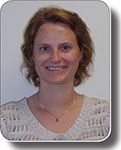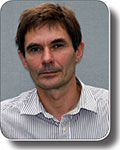Development of semi-submersible production vessels and its application to Australian waters
Hilde Engelsen A and Henrik Hannus BA Aker Kvaerner Australia
B Aker Kvaerner Engineering and Technology, Norway
The APPEA Journal 48(1) 241-248 https://doi.org/10.1071/AJ07015
Published: 2008
Abstract
Semi-submersible platforms have a long history in the North Sea. In the beginning they were used mainly as mobile offshore drilling units, but in the last two decades the permanently moored semi-submersible production vessels have become widely used both as gas processing units and combination oil and gas production vessels. The design of production semi-submersibles evolved from that of drilling rigs, but there have since been significant improvements to the design of the hull and the topside configuration in relation to operational requirements and construction processes. The design methods have also been successfully adapted to areas with different environmental conditions, in combination with steel catenary risers and polyester mooring systems. On recent designs, simplifications of the hull systems are being implemented, which ease operation and enhance the passive safety. Finally, the semi-submersible production vessel’s application to Australian waters is discussed with focus on topside layout, hull design and mooring system design. Environmental conditions offshore northwest Australia are compared to North Sea and Gulf of Mexico conditions, along with vessel class and regulatory requirements.

Hilde Engelsen is a senior naval architect with Aker Kvaerner Engineering and Technology, and is now seconded to Aker Kvaerner Australia. Hilde has 11 years experience in the oil and gas industry, mainly with design of floating production vessels such as Gjoa, Kristin, P52 and Snorre B. She holds a MSc from the Norwegian University of Science and Technology and is a registered engineer with the Norwegian Society of Chartered Scientific and Academic Professionals (Tekna). Hilde.Engelsen@akerkvaerner.com |

Henrik Hannus has more than 20 years experience in the oil and gas industry, all in the area of floating platform design, construction and installation. He now heads Deepwater Solutions in Aker Kvaerner Engineering & Technology, managing the floaters and risers development, as well as the conceptual integrity of the projects under execution. He previously built up a similar capacity at Aker Kvaerner’s Houston office. Prior experience includes project functions from the Snorre and Heidrun floating platform developments. Henrik is a naval architect from the Royal Institute of Technology in Stockholm, Sweden. Henrik.Hannus@akerkvaerner.com |


